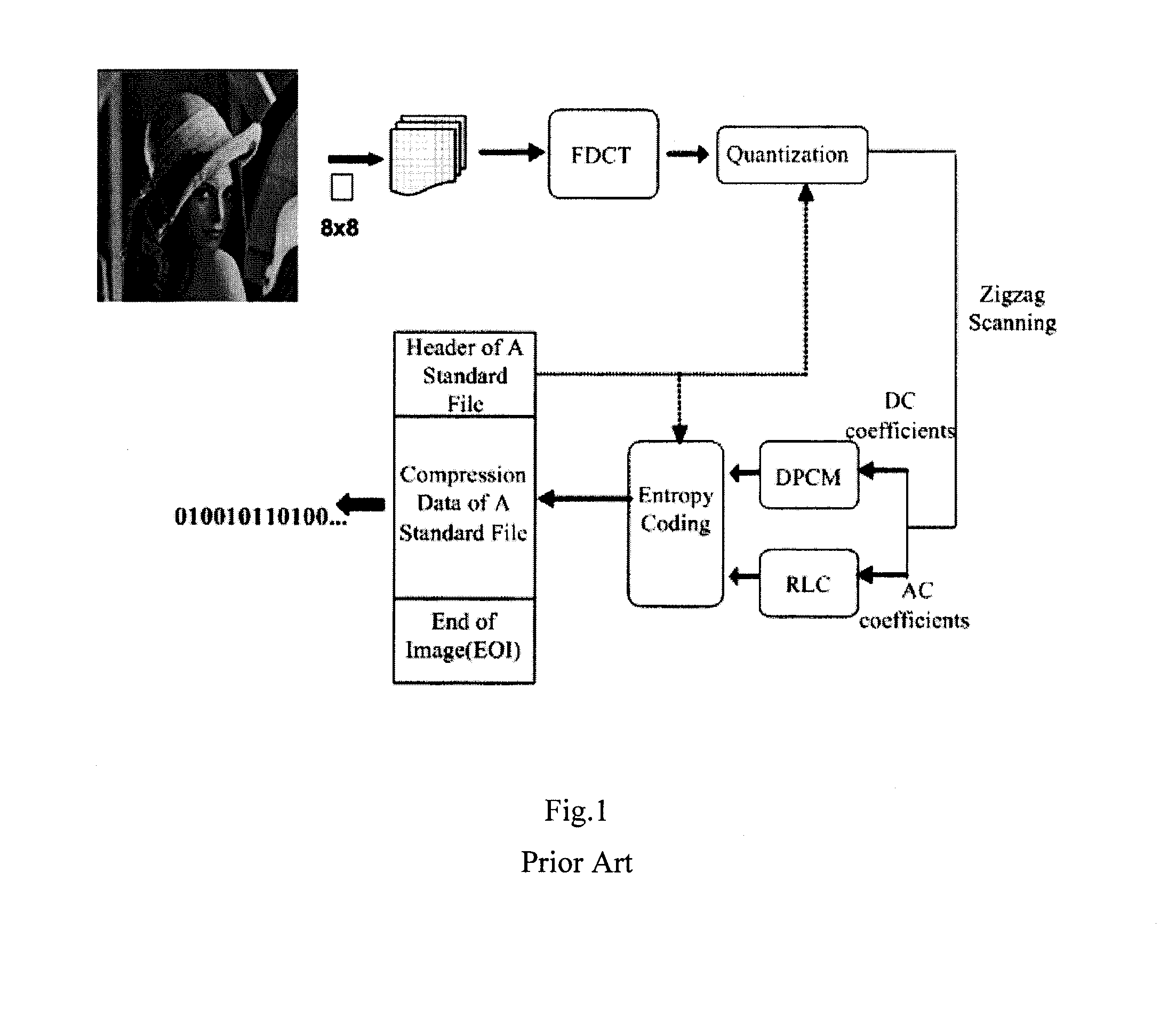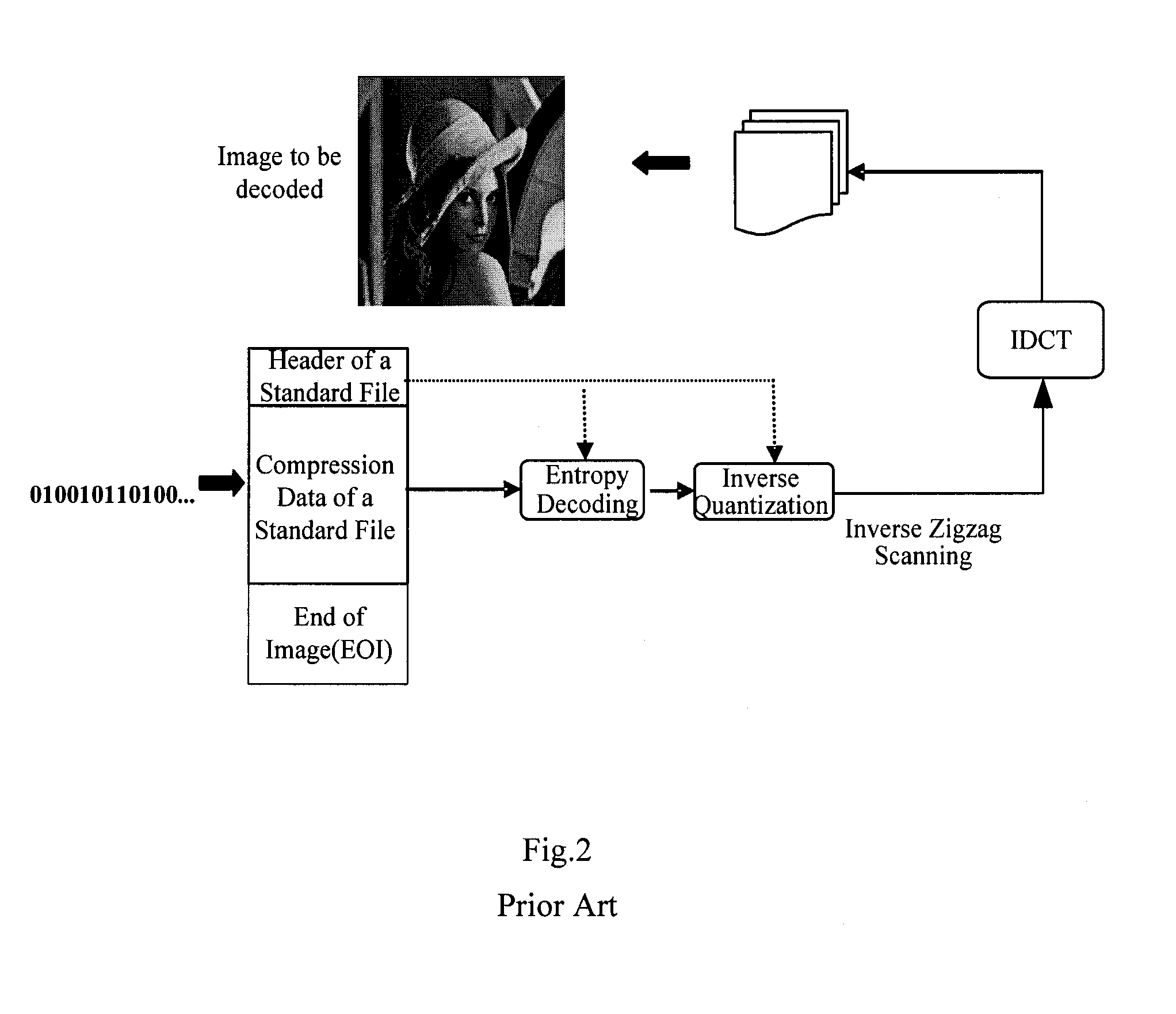Method and system for still image encoding and random access decoding
- Summary
- Abstract
- Description
- Claims
- Application Information
AI Technical Summary
Benefits of technology
Problems solved by technology
Method used
Image
Examples
example 1
[0048]FIGS. 3A to 6 show a still image encoding method that supports decoding at a random access point and includes the following steps S1 to S5.
[0049]In step S1, an input image is split into 8×8 pixel blocks which are then grouped into a number of minimum coded units (MCU's) according to the format of the image, such that each of the MCU's consists of a constant number of 8×8 pixel blocks.
[0050]Preferably, the format of the image is a YUV format, such as YUV422, YUV444 or YUV420.
[0051]In step S2, the MCU's of the image are raster scanned and then processed in the raster scan order, as illustrated in FIG. 6. Scanning the MCU's in the raster scan order further includes the following steps (i.e., steps S21 to S24):
[0052]S21: using a forward discrete cosine transform (FDCT) to convert the 8×8 pixel blocks of each of the MCU's into DCT coefficients;
[0053]S22: quantizing the DCT coefficients to obtain quantized DCT coefficients;
[0054]S23: zigzag scanning the quantized DCT coefficients to...
example 2
[0068]FIGS. 7A and 8 show a method for decoding the special JPEG file generated from the method of Example 1. The decoding method includes the following steps S10 to S15.
[0069]In step S10, based on the top-left corner entry, width and height of an image region of interest, the position of a byte-aligned bitstream of a MCU in correspondence with the image region of interest in the compression data of the special JPEG file is found out through querying the position table.
[0070]In step S11, byte-aligned bitstreams of the MCU's are extracted from the compression data according to the determined position, and the extracted bitstreams are entropy decoded to recover corresponding quantized DCT coefficients sequenced from the lowest frequency to the highest frequency, wherein the quantized DCT coefficients include AC coefficients and DC coefficients, and the AC coefficients are recovered by run-length decoding, while the DC coefficients are recovered without performing differential pulse-co...
example 3
[0078]Referring to FIG. 9, the invention also provides a JPEG encoding system that supports decoding at a random access point. As illustrated, the system includes an image splitting module 11, a scanning module 12, an aligning module 13, a generating module 14 and a position-table module 15.
[0079]Imaging splitting module 11 is configured to split an input image into 8×8 pixel blocks and then group them into a number of MCU's according to the format of the image, such that each of the MCU's consists of a constant number of 8×8 pixel blocks.
[0080]Preferably, the format of the image is a YUV format, such as YUV422, YUV444 or YUV420.
[0081]scanning module 12 is configured to process the MCU's in the raster scan order, as illustrated in FIG. 6, by subjecting each MCU sequentially to FDCT for converting the 8×8 pixel blocks of each of the MCU's into DCT coefficients, quantization of the DCT coefficients using a quantization table to obtain quantized DCT coefficients, zigzag scanning for se...
PUM
 Login to View More
Login to View More Abstract
Description
Claims
Application Information
 Login to View More
Login to View More - R&D
- Intellectual Property
- Life Sciences
- Materials
- Tech Scout
- Unparalleled Data Quality
- Higher Quality Content
- 60% Fewer Hallucinations
Browse by: Latest US Patents, China's latest patents, Technical Efficacy Thesaurus, Application Domain, Technology Topic, Popular Technical Reports.
© 2025 PatSnap. All rights reserved.Legal|Privacy policy|Modern Slavery Act Transparency Statement|Sitemap|About US| Contact US: help@patsnap.com



